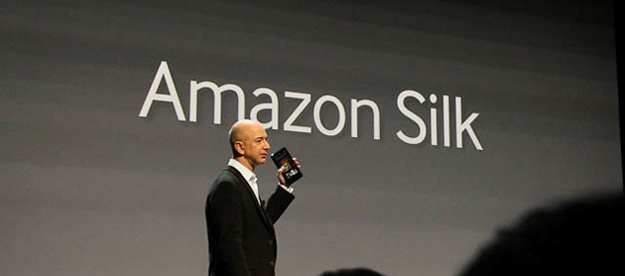
With the launch of the new Kindle Fire, all of us in the web development field may have a new browser to add to our QA roster in 2012: Amazon Silk. Projections of the Kindle Fire (with its appealing $199 price point) are strong, with estimates of around 5 million by the end of 2011 and 20 million by 2012. To put that in perspective, the iPad has sold about 28 million since its launch. Rather than use an existing browser, Amazon has crafted its own that takes advantage of their vast cloud computing network to speed up mobile browsing—and in the meantime will be gathering more data about its users than they will likely realize.
How “Split Browsing” is Different
The most significant change this device introduces (aside from its price point) is its “split browsing” technology. Unlike traditional browsers which operate locally on one’s device, the Kindle Fire offloads part of your browser processing task to Amazon’s EC2 cloud computing network. Over time, it gets to know your browsing habits and will preload content within the cloud to ensure a fast browsing experience for the sites you care the most about.
Predictive Page Loading
Not only is Silk using your browser history to optimize your browsing experience, it’s also using the aggregate browsing history for all Silk users to figure out the most efficient way to process and load web pages. It will anticipate your next move, perhaps before you’ve ever even considered where you’d like to click next. As the Silk team explains in the video below (around minute 4), it may observe that visitors to the New York Times home page are most likely to navigate to the business section. They will have those popular next steps loaded and ready for instant loading, assuming you will also follow a similar path.
You Gain Speed, Amazon Gains Your Browser History
Sounds like a win-win, right? Let Amazon’s cloud computers shoulder the brunt of your mobile web processing demands and in return get lightning fast browsing on a sub-$200 device. But then there is the sobering fact that Amazon will have access to millions of people’s browsing habits far beyond what’s happening on Amazon.com. If you were a competitor to Amazon, this would be very, very bad news. Not to mention the icky feeling that most people are completely unaware that this is happening, as it’s a default opt-in for Kindle Fire users. These concerns aren’t going unnoticed—and Congress has demanded some answers from Amazon about how it intends to use these data.
What this Means for Web Developers and Marketers
The introduction of the split browsing experience could mark a significant change for web developers as it cedes unprecedented control to the browser in how it chooses to render a site’s content. As mobile device usage becomes the norm, so too will the expectation that sites load on these devices with equivalent speed as desktops. To achieve that kind of result, we’ll have to cede control to middlemen like Amazon who have the computational muscle to carry the load.
Will Amazon be transparent about when and how it chooses to customize your browsing experience? Will it favor sites already hosted within its cloud? Will this browser show up on non-Amazon devices in the future? We’ll just have to wait and see.


